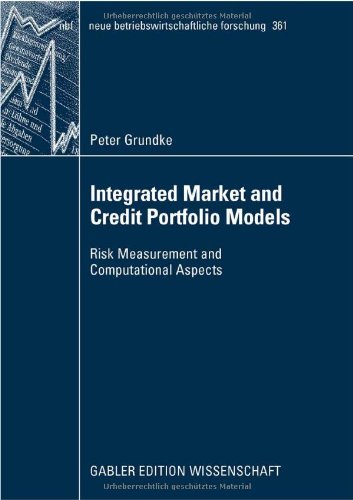

Most ebook files are in PDF format, so you can easily read them using various software such as Foxit Reader or directly on the Google Chrome browser.
Some ebook files are released by publishers in other formats such as .awz, .mobi, .epub, .fb2, etc. You may need to install specific software to read these formats on mobile/PC, such as Calibre.
Please read the tutorial at this link: https://ebookbell.com/faq
We offer FREE conversion to the popular formats you request; however, this may take some time. Therefore, right after payment, please email us, and we will try to provide the service as quickly as possible.
For some exceptional file formats or broken links (if any), please refrain from opening any disputes. Instead, email us first, and we will try to assist within a maximum of 6 hours.
EbookBell Team

5.0
68 reviews
ISBN 10: 3834908754
ISBN 13: 9783834908759
Author: Peter Grundke
Banks are exposed to various kinds of risks; among them are credit default risks, market price risks and operational risks the most important ones. Aggregating these different risk ex- sures to a comprehensive risk position is an important, yet challenging and up to now un- solved task. Banks’ current state of the art in risk management is still far away from achieving a fully integrated view of the risks they are exposed to. This shortfall traces back to both, to conceptual problems of constructing an appropriate risk model and to the computational b- den of calculating a loss distribution. The approach presented in this book takes credit default risk as a starting point. By integrating market risks, a general credit risk model is constructed that comprises the standard industry credit risk models as special cases. Within the framework of this general credit risk model, the effects of simplifying assumptions that are typical for standard credit risk models can be a- lyzed. Important insights gained by this analysis are that neglecting market price risks and losses given default correlated to default rates can cause a significant understatement of value at risk figures.
Front Matter
Introduction
The Integrated Market and Credit Portfolio Model
Effects of Integrating Market Risk into Credit Portfolio Models
On the Applicability of Fourier-Based Methods to Integrated Market and Credit Portfolio Models
Importance Sampling for Integrated Market and Credit Portfolio Models
Conclusions
Tags: Peter Grundke, Market, Portfolio